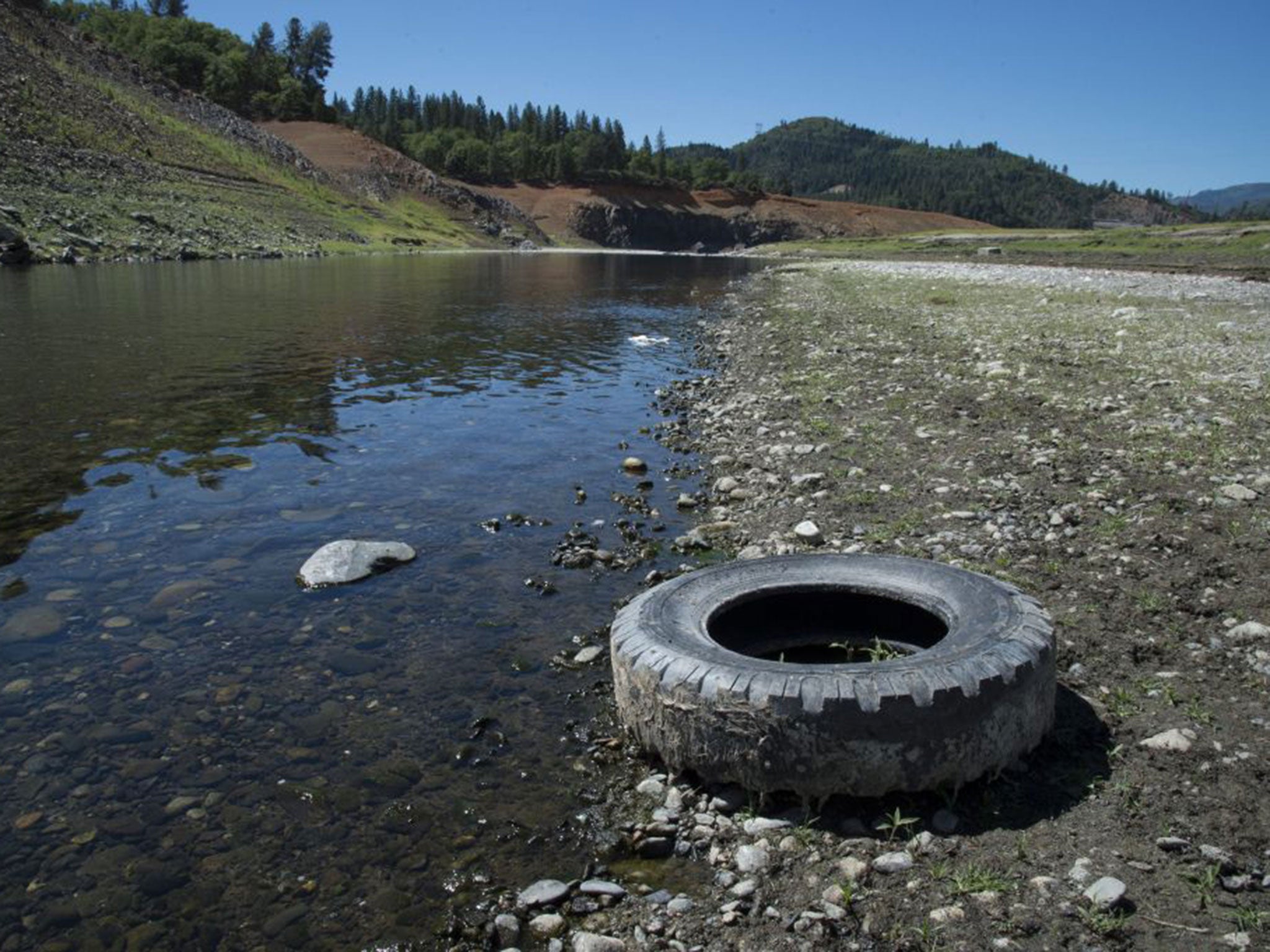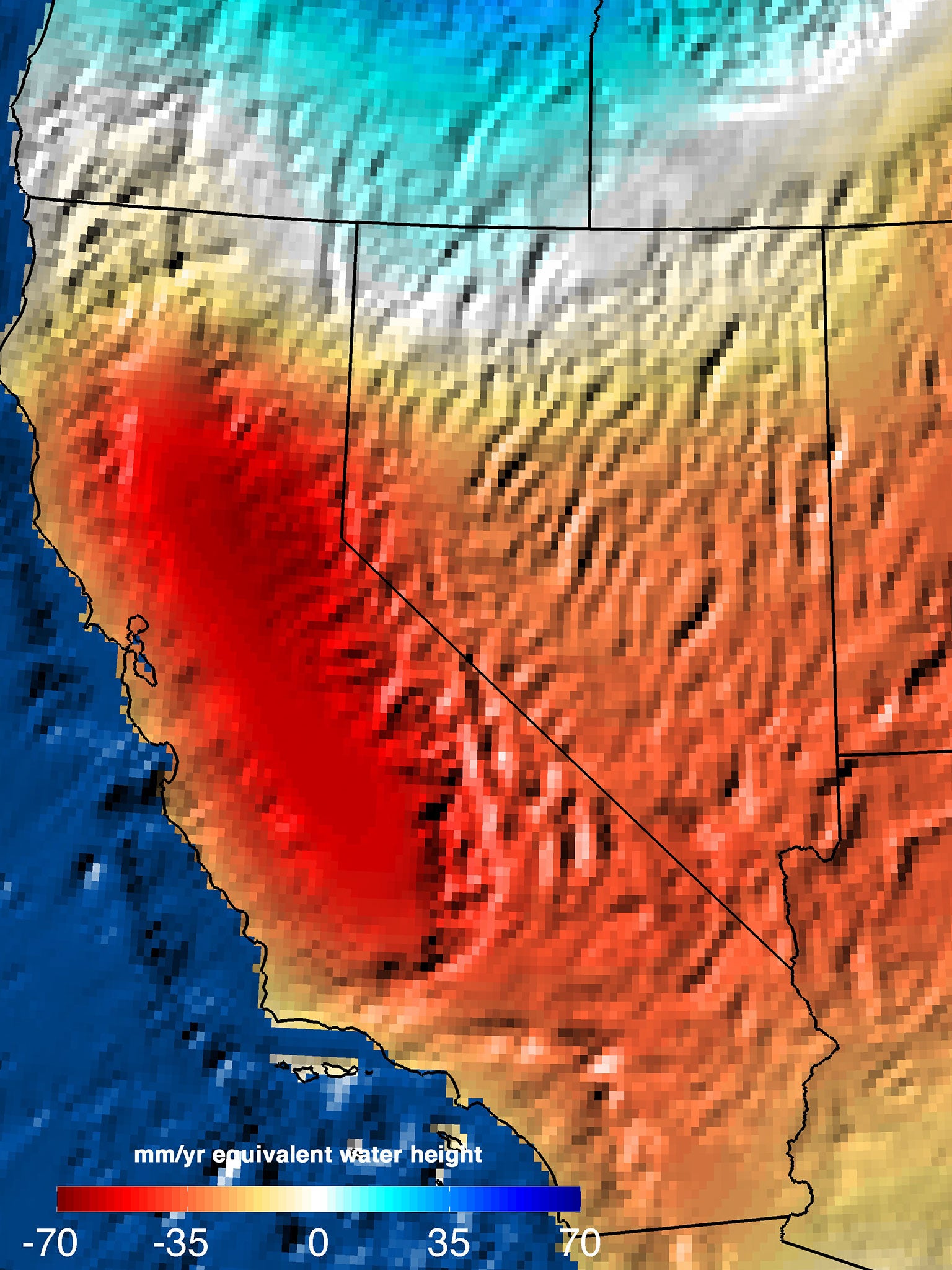California needs 11 trillion gallons of water to recover from continuing drought - Nasa
It will take years for water supplies to be replenished, according to satellite data

Your support helps us to tell the story
From reproductive rights to climate change to Big Tech, The Independent is on the ground when the story is developing. Whether it's investigating the financials of Elon Musk's pro-Trump PAC or producing our latest documentary, 'The A Word', which shines a light on the American women fighting for reproductive rights, we know how important it is to parse out the facts from the messaging.
At such a critical moment in US history, we need reporters on the ground. Your donation allows us to keep sending journalists to speak to both sides of the story.
The Independent is trusted by Americans across the entire political spectrum. And unlike many other quality news outlets, we choose not to lock Americans out of our reporting and analysis with paywalls. We believe quality journalism should be available to everyone, paid for by those who can afford it.
Your support makes all the difference.California needs 11 trillion gallons of water to recover from its continuing drought, according to Nasa scientists.
The space agency analysed its satellite data to discover that the entire contents of the largest reservoir in the US would not be anywhere near enough to replenish water levels in the state.
A state of emergency was declared almost a year ago as one of the worst droughts on record caused water shortages and devastated farms.
Jay Famiglietti, of NASA's Jet Propulsion Laboratory, said that without extreme weather, the crisis will continue for years to come.
“It takes years to get into a drought of this severity, and it will likely take many more big storms, and years, to crawl out of it,” he added.
The scientists cautioned that while the recent California storms have been helpful in replenishing water resources, they were not sufficient to end the drought.

Findings presented at the American Geophysical Union meeting in San Francisco on Tuesday used Nasa’s “Grace” satellites.
Data is being used to identify key features of droughts to help with water management and calculate the volume of water required to end an episode of drought for the first time.
At the peak of California's three-year drought earlier this year, the team found that water storage in the Sacramento and San Joaquin river basins was 11 trillion gallons below normal seasonal levels and the deficit has increased steadily for a decade.
The basins have decreased in volume by four trillion gallons of water each year - more than California's 38 million residents use each year - mostly due to depletion of groundwater beneath California's Central Valley.
Mr Famiglietti said measurements from space monitoring the Earth’s changing shape, surface height and gravity field allows Nasa us to analyse droughts “better than ever before”.
“That's an incredible advance and something that would be impossible using only ground-based observations,” he added.
The bleak picture for water was not improved by research into California’s snow, showing the depth in the Sierra Nevada mountain range was just half of previous estimates. The snowpack is vital for its annual melt that fills reservoirs and streams.
New drought maps show groundwater levels across the south-western US are in the lowest 2 to 10 per cent since 1949.
Join our commenting forum
Join thought-provoking conversations, follow other Independent readers and see their replies
Comments